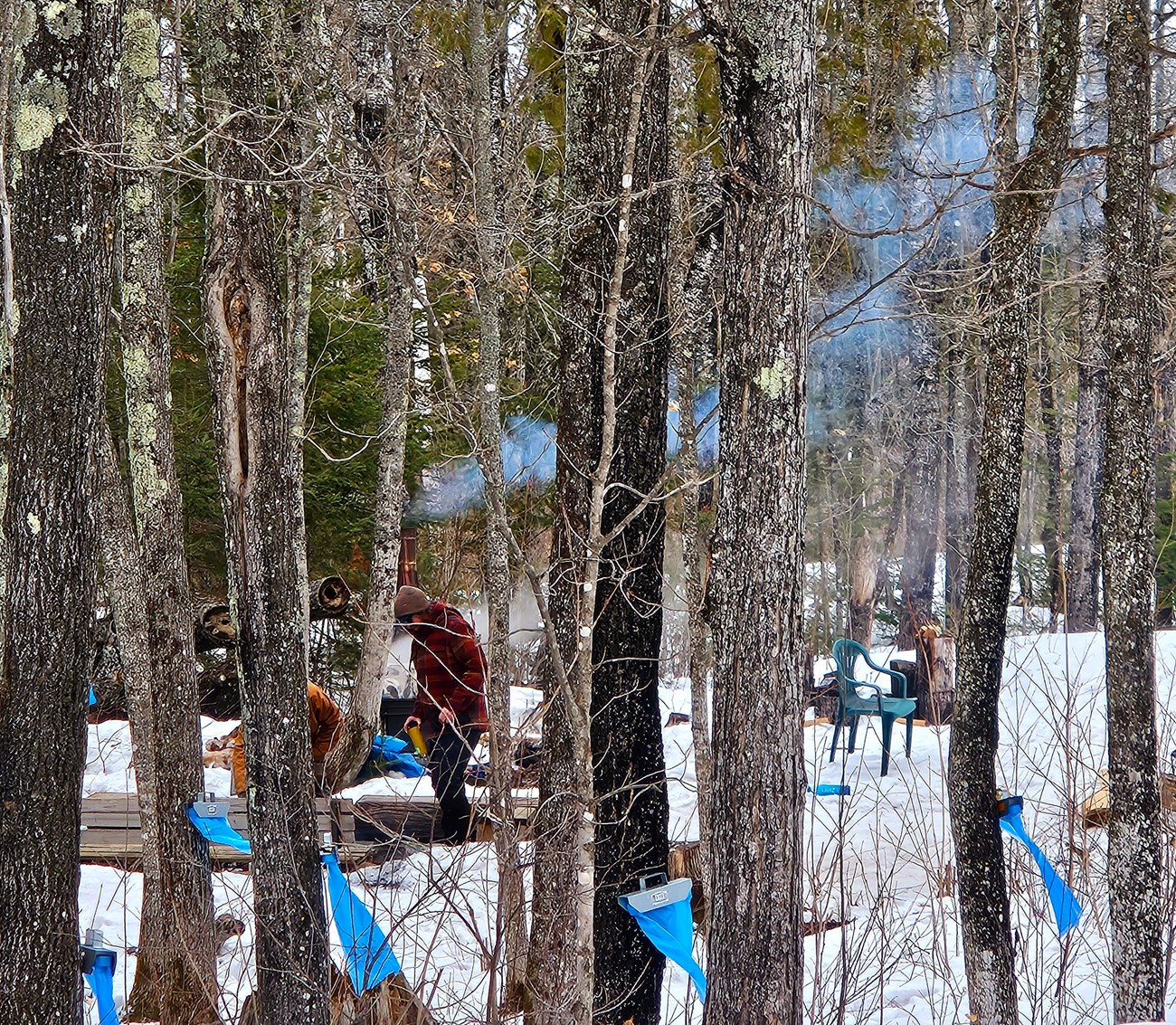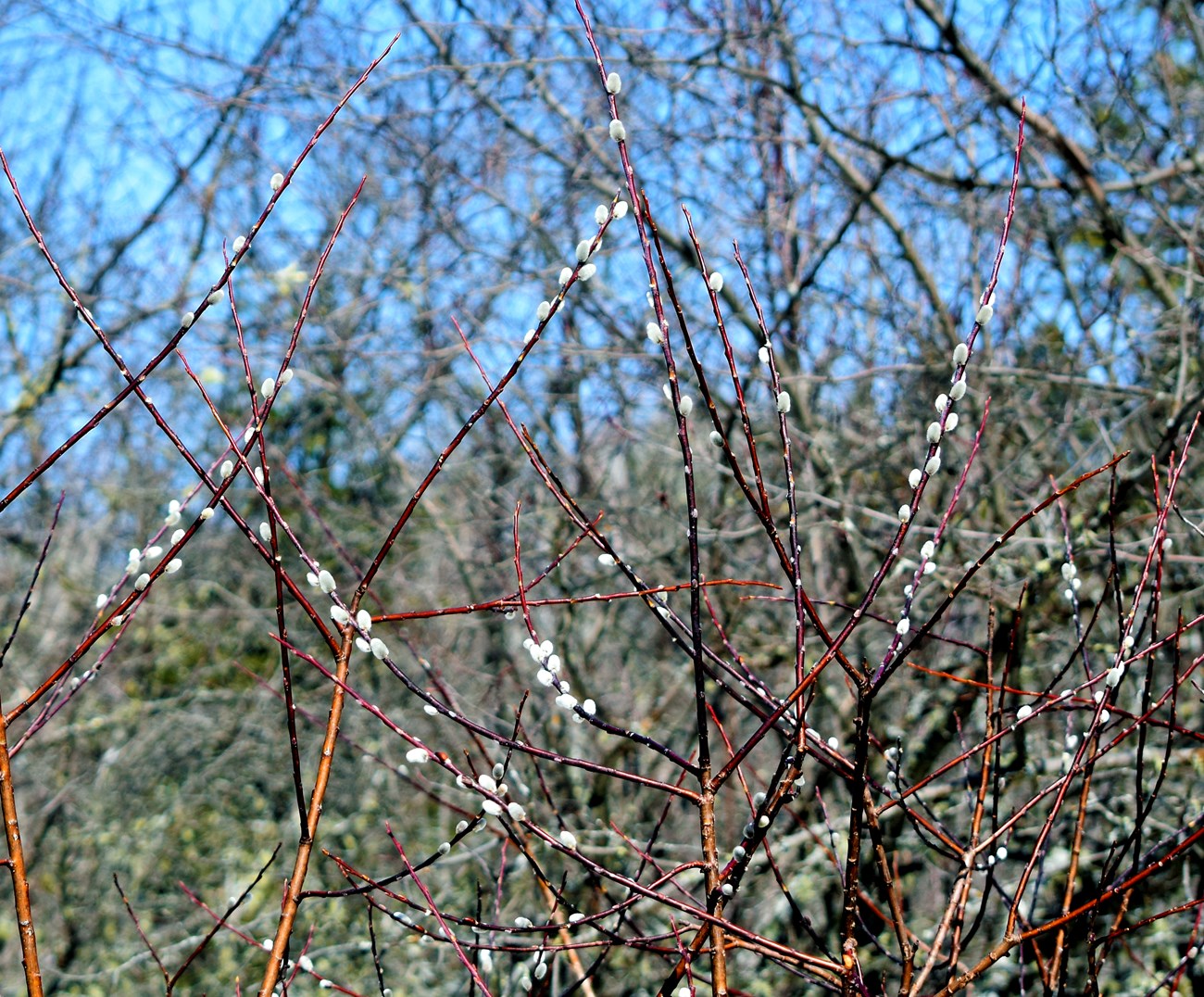Last updated: April 24, 2025
Article
Iskigamizigan (Sugarbush)

NPS Photo / GM Spoto
Food from the Forest
The Minnesota Arrowhead is within the maple range that extends north into
Canada and south into Wisconsin and Michigan. In late winter, when days are above freezing and nights below, maple sap runs. Sun warms the sap in the canopy, which passes into the roots at night to warm the soil. This process repeats until the area within the roots thaws and sap can run throughout the tree. This sugary first sap of the year has an antifreeze quality and is the sweetest. Later, second sap provides nutrients for leaves and new growth. This second sap is more like molasses. The first, sweeter, sap is preferred for sugar and syrup making.
In the past, people at the sugarbush worked the syrup in troughs with paddles into sugar that made it easier and lighter to transport, to be used for seasoning food or flavoring water. Maple sugar cakes in the shape of humans, animals, moons, and other nature-based forms would be given as gifts. Sugar makers competed and took pride in original designs. Ziinzibaakwad (maple sugar) was also commonly stored in small birch cones or poured on to the snow to harden rapidly into candies.

NPS Photo / GM Spoto
Time to Tap
In Grand Portage, next to the Stone bridge, a certain cluster of pussy willows pop their buds when it is time to tap trees at the iskigamizigan (sugarbush). Tapping begins on sun-facing slopes, especially in early season when the sap runs sooner as the sun warms the tree. Carbohydrate enriched sap flows before leaf buds break open and is best before buds swell. This process begins in fall when dropping leaves create an insulating blanket that protect roots from freezing, followed by a deep snowpack, then access to groundwater when the sap begins to move. As days warm, trees need water to keep sap flowing during the day.

NPS Photo / GM Spoto
Ziinzibaakwad (Maple Sugar) -
a Community Tradition
Traditionally, Anishinaabe (Ojibwe, Odawa, and Potawatomi) people moved seasonally within their home watershed, following resource availability throughout the year – giigoonhyike (fishing), manoominike (wild rice harvesting), wanii'ige (trapping), maawinzo (berry-picking), gitige (gardeining), and wiigwaasike (bark harvesting) are some of the seasonal activities that prompted a move. In late winter, this meant traveling to the iskigamizigan (sugarbush) to reunite with inawemaaganag (relatives) and friends who were scattered throughout the forest during the winter.
Maple sugaring is one of the Anishinaabe/Ojibwe lifeways passed on to younger generations within the Grand Portage community. Ziinzibaakwad (maple sugar) is a traditional Anishinaabe/Ojibwe food. Producing it is an important community event where friends and family gather at the iskigamizigan (sugarbush) in a ininaatig (maple) grove. It is possible that originally people learned to tap trees by observing wildlife in spring chewing maple twigs/licking the dried/crystallized sap.
Grand Portage’s Oshki Ogimaag (New Leaders) Community School K-5 students, as well as younger Head Start and older high school local youth, join to practice their culture by learning tree tapping, sap collecting, syrup production with an evaporator, and to celebrate the beginning of spring with the community. An important part of this gathering is a bonfire. This year students learned to cook fry bread and bannock over the open fire.
